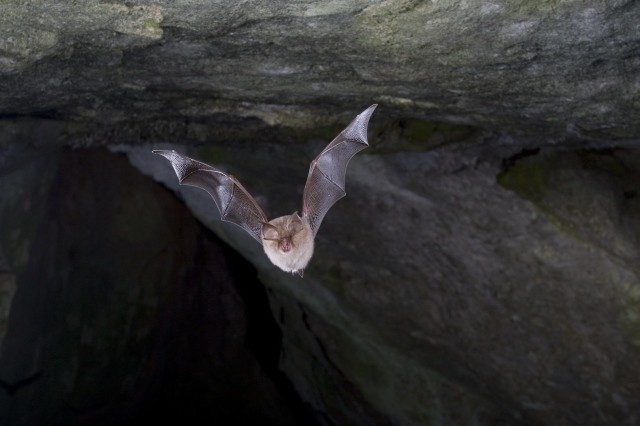Lesser horseshoe bat
A species of Horseshoe bat Scientific name : Rhinolophus hipposideros Genus : Horseshoe bat
Lesser horseshoe bat, A species of Horseshoe bat
Scientific name: Rhinolophus hipposideros
Genus: Horseshoe bat
Content
Description People often ask General Info
 Photo By F. C. Robiller / naturlichter.de , used under CC-BY-SA-3.0 /Cropped and compressed from original
Photo By F. C. Robiller / naturlichter.de , used under CC-BY-SA-3.0 /Cropped and compressed from original Description
The lesser horseshoe bat is one of the world's smallest bats, weighing only 5 to 9 grams, with a wingspan of 192–254 mm and a body length of 35–45 mm. It has strong feet that it uses to grasp rocks and branches, and can see well in spite of its small eyes. Like most bats, lesser horseshoe bats live in colonies and hunt their prey by echolocation, emitting ultrasound from specialized round pads in their mouth. The base of its fur, which is soft and fluffy, is light grey in colour, with dorsal side fur smoky brown and the ventral side grey, with the exception of juvenile bats which are entirely dark grey. Ears and wing membranes are a light greyish brown. When hunting they are quick and agile, often flying within five metres of the ground while avoiding contact with bushes and shrubs. The lesser horseshoe bat eats small insects, most of which are gleaned from stones and branches. Their favorite types of prey include flies, mosquitoes, butterflies, moths, and spiders. The average lifespan of Rhinolophus hipposideros is 3 years, although some individuals have been known to live far longer. 
People often ask
General Info
Lifespan
3 years
Diet
Lesser horseshoe bat primarily feeds on small insects, focusing predominantly on spiders and flies. Its hunting strategy is highly effective, enabling it to capture prey even in dense undergrowth or utter darkness, thus leading to a diet rich in such arthropods.
Appearance
Lesser horseshoe bat is a relatively small bat with soft, dense fur. It displays shades of gray-brown on its upper body, with lighter, silvery tones below. Its most distinctive feature is its extraordinary nose structure. This bat has an elaborate, leaf-like, serrated nose appendage, often likened to a horseshoe, providing echo-location precision. There are no notable differences in appearance due to age, gender, or subspecies.
Behavior
Lesser horseshoe bat exhibits a nocturnal nature with most of its activity happening during the night. Known for roosting in caves, this species uniquely selects smaller and more thermally stable caves for hibernation. Lesser horseshoe bat is a hawking species, preferring to forage in woodland and along hedgerows. Its social behavior is characterized by forming colonies, indicating a social structure. To ensure survival, migration is practiced between different roost sites.
Population
Decreasing

 Photo By F. C. Robiller / naturlichter.de , used under CC-BY-SA-3.0 /Cropped and compressed from original
Photo By F. C. Robiller / naturlichter.de , used under CC-BY-SA-3.0 /Cropped and compressed from original Scientific Classification
Phylum
Chordates Class
Mammals Order
Bats Family
Horseshoe bats Genus
Horseshoe bat Species
Lesser horseshoe bat